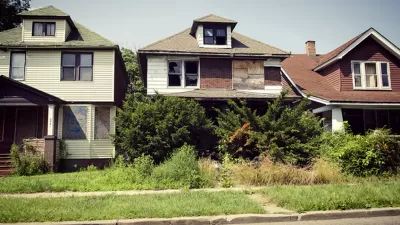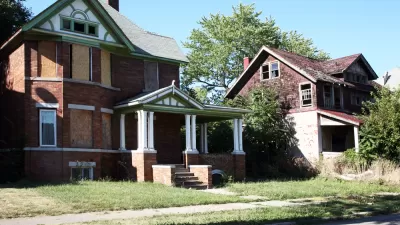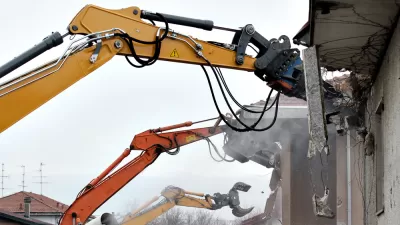Detroit's aggressive blight reduction strategy, to demolish vacant homes by the thousands, is coming under scrutiny for rising costs. The FBI and the U.S. Inspector General are investigating.

Matt Helms reports on the latest details of an expanding federal investigation in Detroit into increased costs in the city's demolition program. First, for those who missed it:
The FBI is assisting the U.S. Special Inspector General for the Troubled Asset Relief Program, or SIGTARP, in an investigation of bidding and price hikes for tearing down blighted homes in Detroit after costs rose from $8,500-$10,000 per home under former Mayor Dave Bing to an average at one point of $16,400 in 2014 under the Duggan administration's aggressive revamp of the city's demolition program.
Detroit has received more than $170 million from the TARP Hardest Hit Fund, dating back to 2013 and as recently as October 2015.
The Detroit demolition program already completed a review with the Michigan State Housing Development Authority over the rising costs of demolition, finding that costs rose an understandable amount when the Detroit Land Bank Authority and the Detroit Building Authority strengthened its contractor selection process. According to the article by Helms, Mayor Mike Duggan predicts that the federal government will reach the same conclusion. Helms details more about the city's business practices early in the demolition program and what's known so far about the emerging federal investigation.
For more detail of the investigation, see also an article by Joe Guillen and Tresa Baldas, who reported on the FBI joining the investigation earlier in May. Matt Helms and Joe Guillen were also reporting on the rising costs of the demolition program in October 2015.
FULL STORY: Duggan: I'm OK with feds investigating blight program

Alabama: Trump Terminates Settlements for Black Communities Harmed By Raw Sewage
Trump deemed the landmark civil rights agreement “illegal DEI and environmental justice policy.”

Study: Maui’s Plan to Convert Vacation Rentals to Long-Term Housing Could Cause Nearly $1 Billion Economic Loss
The plan would reduce visitor accommodation by 25% resulting in 1,900 jobs lost.

Why Should We Subsidize Public Transportation?
Many public transit agencies face financial stress due to rising costs, declining fare revenue, and declining subsidies. Transit advocates must provide a strong business case for increasing public transit funding.

Paris Bike Boom Leads to Steep Drop in Air Pollution
The French city’s air quality has improved dramatically in the past 20 years, coinciding with a growth in cycling.

Why Housing Costs More to Build in California Than in Texas
Hard costs like labor and materials combined with ‘soft’ costs such as permitting make building in the San Francisco Bay Area almost three times as costly as in Texas cities.

San Diego County Sees a Rise in Urban Coyotes
San Diego County experiences a rise in urban coyotes, as sightings become prevalent throughout its urban neighbourhoods and surrounding areas.
Urban Design for Planners 1: Software Tools
This six-course series explores essential urban design concepts using open source software and equips planners with the tools they need to participate fully in the urban design process.
Planning for Universal Design
Learn the tools for implementing Universal Design in planning regulations.
Smith Gee Studio
Alamo Area Metropolitan Planning Organization
City of Santa Clarita
Institute for Housing and Urban Development Studies (IHS)
City of Grandview
Harvard GSD Executive Education
Toledo-Lucas County Plan Commissions
Salt Lake City
NYU Wagner Graduate School of Public Service




























